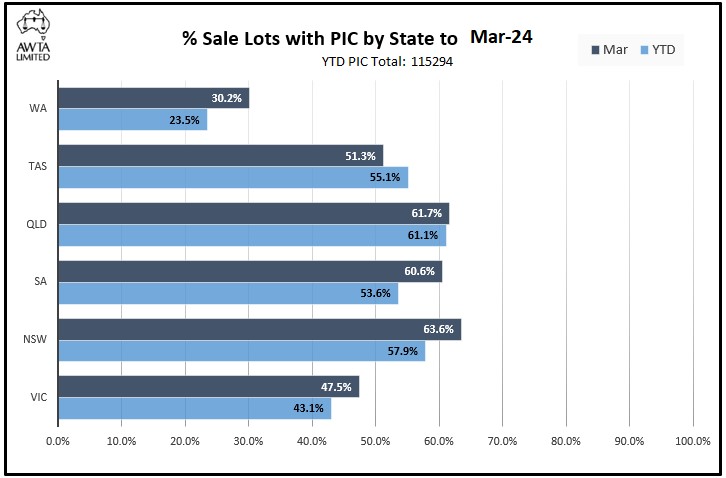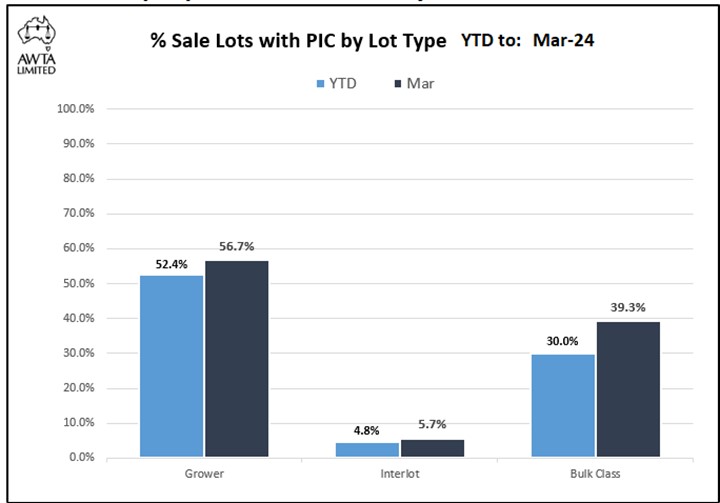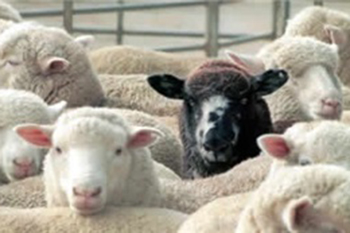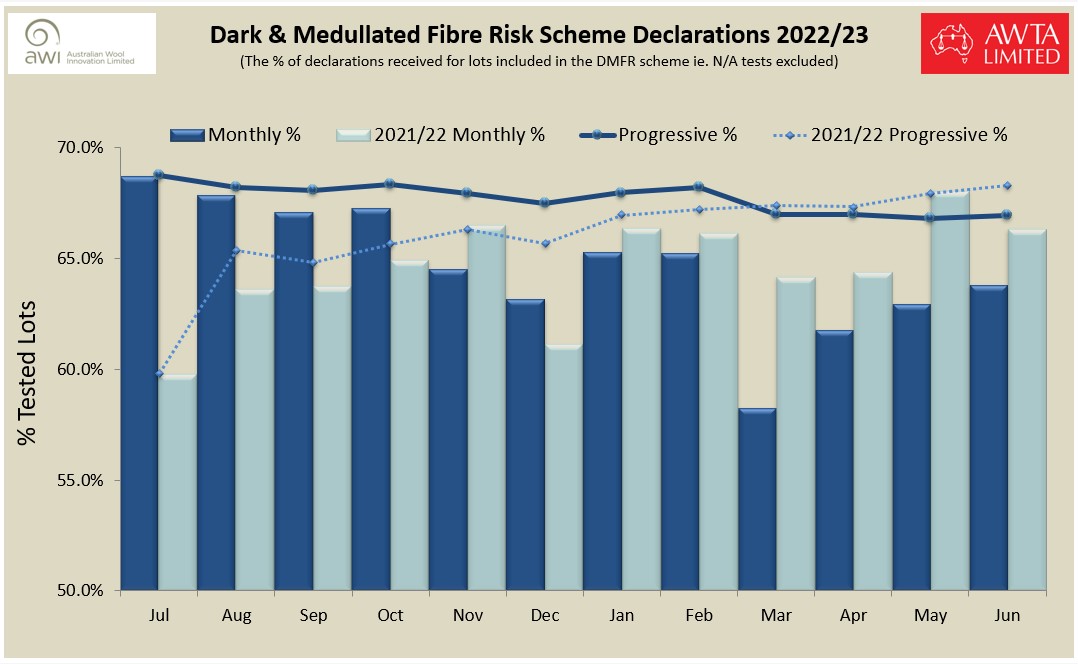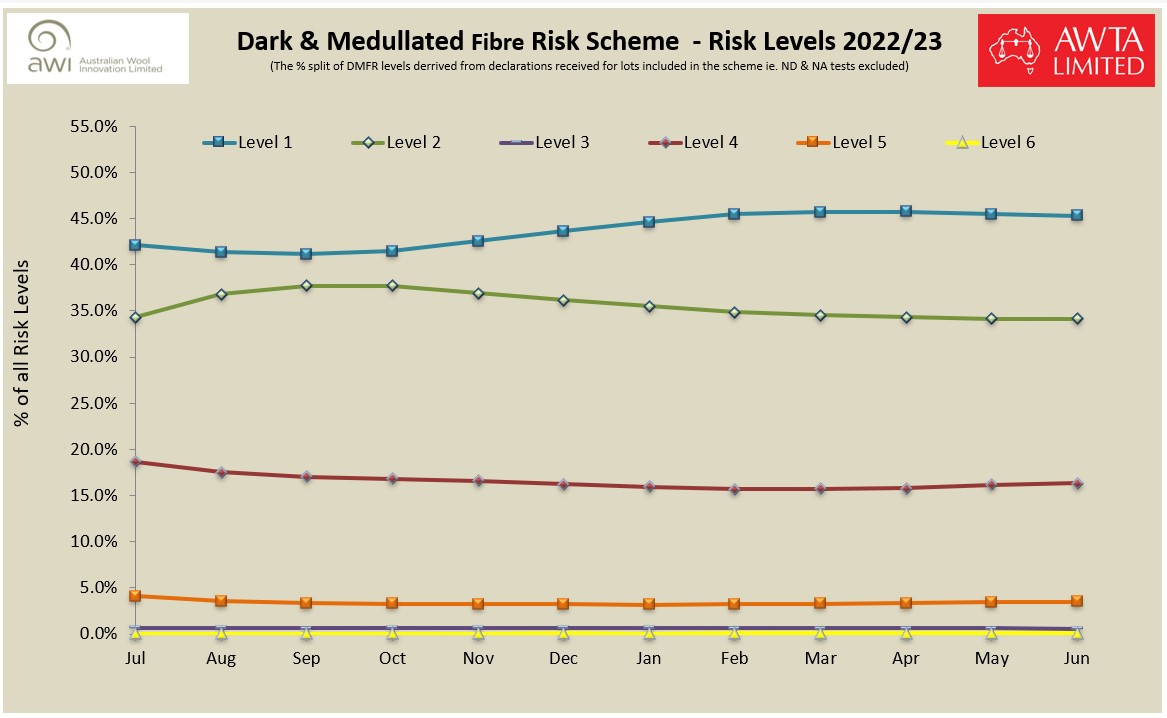
Declaration Rates
Property Identification Code (PIC) transmission rates:
AWTA stores PICs that are declared by sellers as part of the presale testing process. Only the code is stored in AWTA's database and it remains anonymous as we have no means of identifying or referencing which grower or property these codes represent.
The availability of this data has been identified as a key tool in mitigating the impact of an EAD outbreak, by way of pinpointing affected wool between stores and dumps. A high level of uptake is necessary for this data to be reliable, so work is being undertaken by industry groups to increase it. Monitoring & reporting the transmission rate is a key part of this process, data for which is available below.
Graphs can be downloaded here: AWTA PIC Graphs
PIC transmission - this Season v last Season
The monthly and progressive percentage of tested lots that have PIC declared by sellers.
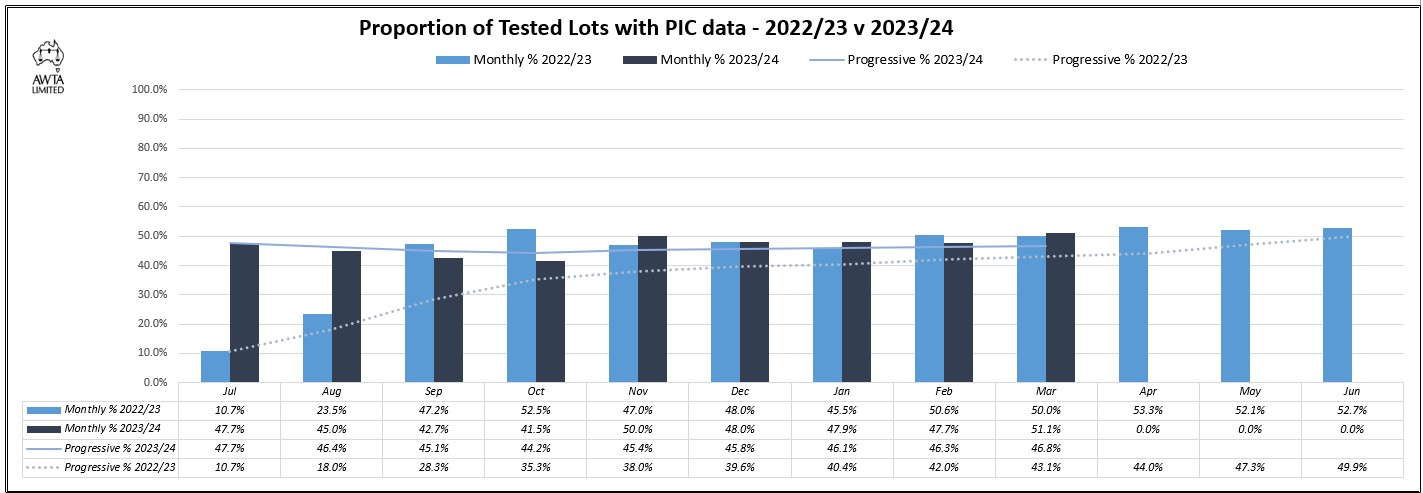
PIC transmission by State
The monthly percentage of tested lots within each state that have PIC declared by sellers.
PIC transmission by Lot Type
The monthly and progressive percentage of tested lots by Lot Type (or WPC - Wool Preparation Category) which have PIC declared by sellers.
Dark Medullated Fibre Risk (DMFR) Scheme Adoption
|
The International Wool Textile Organisation (IWTO), through its Australian affiliate, the Federation of Australian Wool Organisations (FAWO) promotes a program to protect the reputation of Australia's premium Merino white wool by managing the risk of dark and/or medullated fibre contamination. The program operates through voluntary declarations made by wool growers through the classers specification that accompanies wool deliveries to seelling agents stores and brokers warehouses. This information is forwarded to AWTA who then calculate the risk rating and report in on the Yield & Micron test certificate. The DMFR rating is then displayed in sale catalogues so that buyers can make informed purchases. |
|
Risk Rating Calculation
The aim of this program is to:
- Enable Australia's white wool growers to promote their wool as such to buyers
- Provide buyers and processors with a reliable and quantified measure of the level of dark and/or medullated fibre risk in sale lots. This includes contamination of white wool from traditional naturally occurring pigmentation, stains and from the new source, i.e. from contact with exotic breeds
This is achieved by assigning a Dark & Medullated Risk Rating from 1 (best) to 6 (worst) to sale lots, with ratings 1 and 2 suitable for white or pastel shade end products. This is done according to the following diagram.
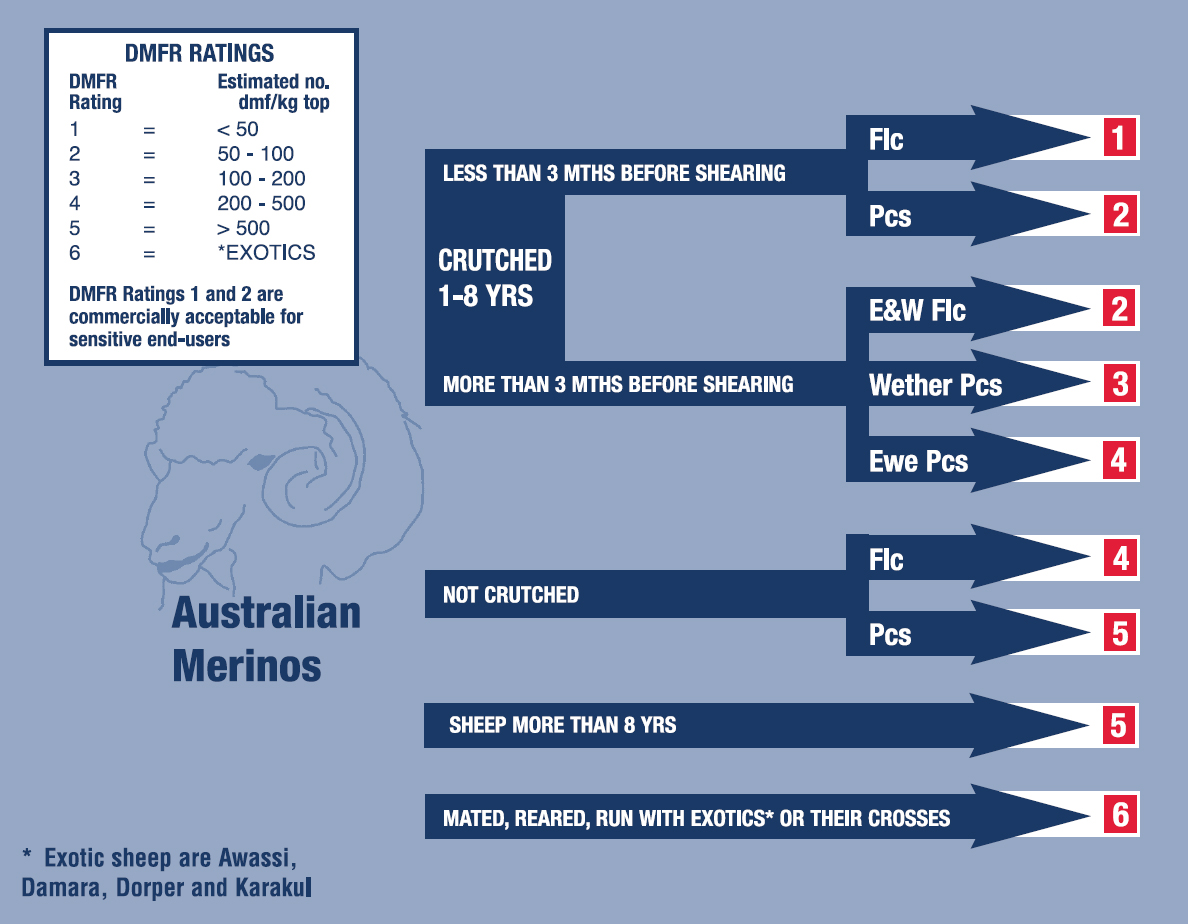
More information on the DMFR scheme is available below.
Briefing: DMFR Scheme![]()
Industry Views: DMFR - See What The Mills Say![]()
Adoption Rate
The DMFR adoption rate is simply defined as the proportion of tested sale lots that have DMFR data declared by the wool grower. A graph of the DMFR adoption rate, comparing the current and previous season's data is shown below.
Risk Level Mix
The DMFR Risk Level Mix shows the relative proportion of each risk level in the overall declaration rate. The DMFR Risk Level Mix for the most recent wool selling season is shown below.
Mulesing Status
In July 2008 the Australian wool industry introduced a National Wool Declaration (NWD) scheme. This scheme allows wool growers to declare the Mulesing Status of wool to be tested by AWTA. That category is then displayed on AWTA Test Certificates and in wool auction catalogues.
The Mulesing Status indicates whether wool is produced by mulesed or non-mulesed sheep and, if sheep have been mulesed, whether an analgesic was used to provide pain relief at the time of mulesing. Woolgrowers with sheep that were previously mulesed may also declare that they have since ceased the practice of mulesing.
Mulesing Status Statistics
AWTA Ltd and the Australian Wool Exchange Ltd (AWEX) jointly publish monthly statistics which report the volume of wool both tested and auctioned under the various Mulesing Status categories. These graphs are available on the following link:
https://www.awex.com.au/market-information/mulesing-status/
Further information regarding Mulesing Status Declarations on AWTA Test Certificates is available here:



